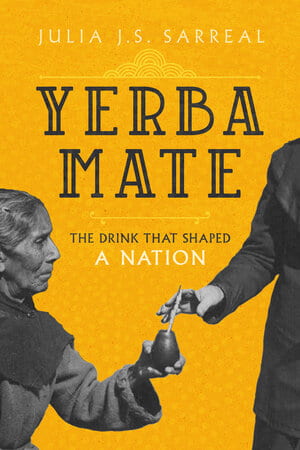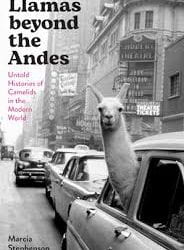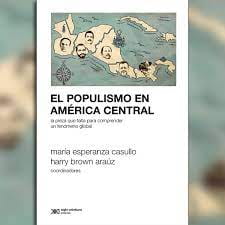A Review of Yerba Mate: The Drink that Shaped a Nation
On any given day, millions of South Americans—in the subcontinent and around the world—would engage in the same ritual. We heat water (making sure it doesn’t boil), prepare the mate, and sip, sip and sip. But where does that green, earthy, addictive, and for many outside South America exotic, drink comes from? And how it became an everyday necessity for so many people and a symbol of belonging and pride for some?
But first, what is mate, the uninitiated reader may rightfully ask. Mate involves the processed leaves of the plant Ilex paraguariensis (yerba mate), the gourd that is used to drink it (mate), and the practice of sipping the infusion from a metallic or wooden straw, which has a sieve at its bottom to avoid sucking the yerba mate’s leaves and stems. Chemically, mate combines stimulant psychoactive alkaloids found in coffee, tea and chocolate (theophylline and theobromine). Beyond its material qualities, however, mate is a symbol that stands as a synecdoche for the Nation and its peoples, and its meaning has been transformed throughout Argentina’s history.

Yerba Mate: The Drink that Shaped a Nation by Julia J. S. Sarreal (Oakland, CA, University of California Press, 2022, 375 pages)
In Chapter One, “From Indigenous Staple to Colonial Commodity,” Sarreal traces the origins of yerba mate to its Indigenous roots, depicting yerba mate consumption among the Guaraní and Kaingang peoples, two indigenous groups that lived on what is today the triple frontier area of northeast Argentina, Paraguay and Southern Brazil. While the first Europeans that colonized South America rejected yerba mate consumption, by the seventeenth century Creoles adopted the practice and turned it into a badge of identity. Yerba consumption subsequently spread across the colonies, with different forms of consumption that varied along lines of racial, economic, and gender hierarchies.
The role that yerba mate played in the colonial project during the late 17th and 18th centuries is tackled in Chapter Two, “Tool of Empire.” Yerba was a powerful tool in connecting contemporary Paraguay with the rest of the Spanish colonies and served as a “diplomatic tool for establishing relations with Indigenous peoples and making them into colonial subjects” (52). Likewise, in this period yerba was also taxed and became a source of revenue for the colony. Yerba mate also played a pivotal role in the regional history of the 19th century (analyzed in Chapter Three, “Borderline Production and the Struggle to Form an Argentine Nation”), as it was produced in Paraguay and Brazil using the coerced labor of Indigenous peoples and widely consumed in Argentina as well.
In Chapter Four, “Gaucho Mythology and the Drink of the New Argentines,” Sarreal offers contributions to the cultural history of yerba mate by a threefold argument. First, she shows how the drink becomes associated with the gauchos and a criollo, nativist identity -in an operation that erased yerba’s Indigenous roots. Second, and by a similar but opposite move, she describes how the new elites that became the dominant class in Argentina by the late 19th century (after defeating the caudillo Juan Manuel de Rosas) rejected mate consumption by this very same association. That is, they disparaged mate as something at odds with the European-looking identity that they sought to emulate and project. Third, she reconstructs the comeback of mate in the early 20th century, when the mass migration from European countries bred anxieties among the elites and mate resurged as a central symbol in the gauchesca literature.
Sarreal unpacks the political and economic aspects and the growing popularity of mate between the end of the 19th century and the first decades of the 20th in Chapter Five, “Profits and Nationalism.” She scrutinizes the boom and bust of yerba mate in the 1910s and 1920s, showing the role of the state and entrepreneurs in this process and the initiatives of using mate production as a tool for promoting European immigration to Argentina’s northeast region. She also details the nationalist rhetoric mobilized in the promotion of Argentine yerba to replace imports from Paraguay and in the “trade wars” over yerba with Brazil. Chapter Six “Yerba Regulation, Nationalism, and the Fall of Laissez-Faire Ideology” extends this line of inquiry into the 1930s, showing the increasing intervention of the state in promoting yerba cultivation, the European migration to the northeast, and the creation of the CRYM, the Comisión Reguladora de la Yerba Mate, an institution that was instrumental in shaping the structure of yerba production and trade in the decades to come (as Sarreal pinpoints, mostly benefitting the companies processing and selling yerba, to the detriment of small farmers and workers). This chapter, as well as Chapters Eight and Nine, seem to invert the meaning of the title; they read more as how the nation (that is, the dominant political, economic and cultural trends of Argentina) shaped yerba, rather than the other way around.
Chapter Seven “Yerba Mate Workers as a Symbol of Capitalist Exploitation” provides a valuable exploration of how labor and the pleas of workers figure in the national history of yerba. Reconstructing key works of muckraking journalism from the early 20th century to the 1940s, Sarreal underlines the ethnic and racial aspects of the yerba workforce, as those authors often spoke of “white slaves” in reference to Paraguayans, Brazilians, and mixed-race Argentines that comprise the yerba workforce. This, for Sarreal, “reveals an inclusive and broad understanding of whiteness, among certain intellectual and left-wing journalists in Argentina, that encompassed mixed-race, Guaraní-speaking peoples,” throwing into sharp relief “how issues of identity in the context of the exploitation of yerba workers would become part of a broader political and racial discourse in Argentina at this time” (190). In doing so, she contributes to the ongoing historiographical conversation that unsettles the myth of “White Argentina” (see, for example, Rethinking Race in Modern Argentina, edited by Paulina Alberto and Eduardo Elena, and Erika Denise Edwards’ Hiding in Plain Sight: Black Women, the Law, and the Making of a White Argentine Republic)
Chapters Eight and Nine, “Modernity, Mass Politics, and Mate’s Decline” and “The Rebirth of Mate with Democracy, Economic Crisis, and Globalization,” respectively, trace how mate lost ground in the public sphere during the years of Peronism and afterward, and rebounds in the 1990s as a powerful cultural symbol during Argentina’s fractured incorporation into globalization processes. Sarreal explains how, by the 1940s, mate had become “associated with poverty, rural living, and even backwardness, a reputation that drove down its popularity in the broader population” (220-221). The author takes a deep dive into the campaigns of yerba brands and their failed attempts to promote mate as an infusion for the middle classes. She also argues that Perón didn’t promote yerba mate because of its association with poverty, which was at odds with the Peronist project of upward mobility. Sarreal also argues that, among middle classes, the decline of mate could be attributed to “ways to distinguish themselves from the common people” (246). The statistics she brings to bear in support of these claims are clear: between 1948 and 1984, “per capita yerba mate consumption declined an average of 40 percent” (244).
In the last chapter, Sarreal shows the resurgence of mate, first as a necessity and then out of pride. In the 1980s, Argentina’s hyperinflation drove consumers away from tea and coffee and rekindled the populace’s relationship with a cheaper substitute for caffeinated drinks. In the following decade, the sweeping adoption of neoliberal policies under the Menem administrations (1989-1999) brought mate back to the fore, Sarreal argues, due to an “invigorated consumer culture” (272) and because “Sharing mate had become a performance of Argentinidad” that gained appealing vis-à-vis homogenizing cultural globalization.
Yerba Mate: The Drink that Shaped a Nation would appeal to anyone interested in learning all that is needed to know about an infusion that is embedded in Argentine culture and the country’s everyday life. Scholars will find it invigorating as well, as it provides a narrative that adroitly blends political economy and cultural history. Furthermore, the book offers a valuable lesson on how a commodity could serve as an entry point to analyze the regional history connecting Argentina, Brazil, and Paraguay and, within Argentina, the links between the northeast region and Argentina’s metropolises. I would recommend heating water, preparing a mate, and sipping while you enjoy the reading.
Pablo Lapegna is Associate Professor of Sociology and Latin American and Caribbean Studies at the University of Georgia (in Athens, GA). He writes and teaches about environmental issues, agrarian studies and social movements, with a focus on Argentina. His book Soybeans and Power: Genetically Modified Crops, Environmental Politics, and Social Movements in Argentina (published by Oxford University Press in 2016) won the Best Book Award of the Sociology of Development Section, American Sociological Association, and it has been published in Spanish as La Argentina Transgénica: De la Resistencia a la Adaptación, una Etnografía de las Poblaciones Campesinas (released by Siglo XXI in 2019).
Related Articles
A Review of Llamas beyond the Andes: Untold Histories of Camelids in the Modern World
Marcia Stephenson’s Llamas beyond the Andes is about humans making use of another animal. With a dustjacket image of Llinda Llee Llama riding in the back of an automobile in mid-20th-century Times Square, this book illustrates how sentient nature has been engulfed by human cultural objectives since Columbus’ arrival in the Americas and the rise of Europe’s global imperial ventures. The window on all this is American camelids: llamas, alpacas and their wild relations, guanacos and vicuñas.
A Review of Born in Blood and Fire
The fourth edition of Born in Blood and Fire is a concise yet comprehensive account of the intriguing history of Latin America and will be followed this year by a fifth edition.
A Review of El populismo en América Latina. La pieza que falta para comprender un fenómeno global
In 1946, during a campaign event in Argentina, then-candidate for president Juan Domingo Perón formulated a slogan, “Braden or Perón,” with which he could effectively discredit his opponents and position himself as a defender of national dignity against a foreign power.




